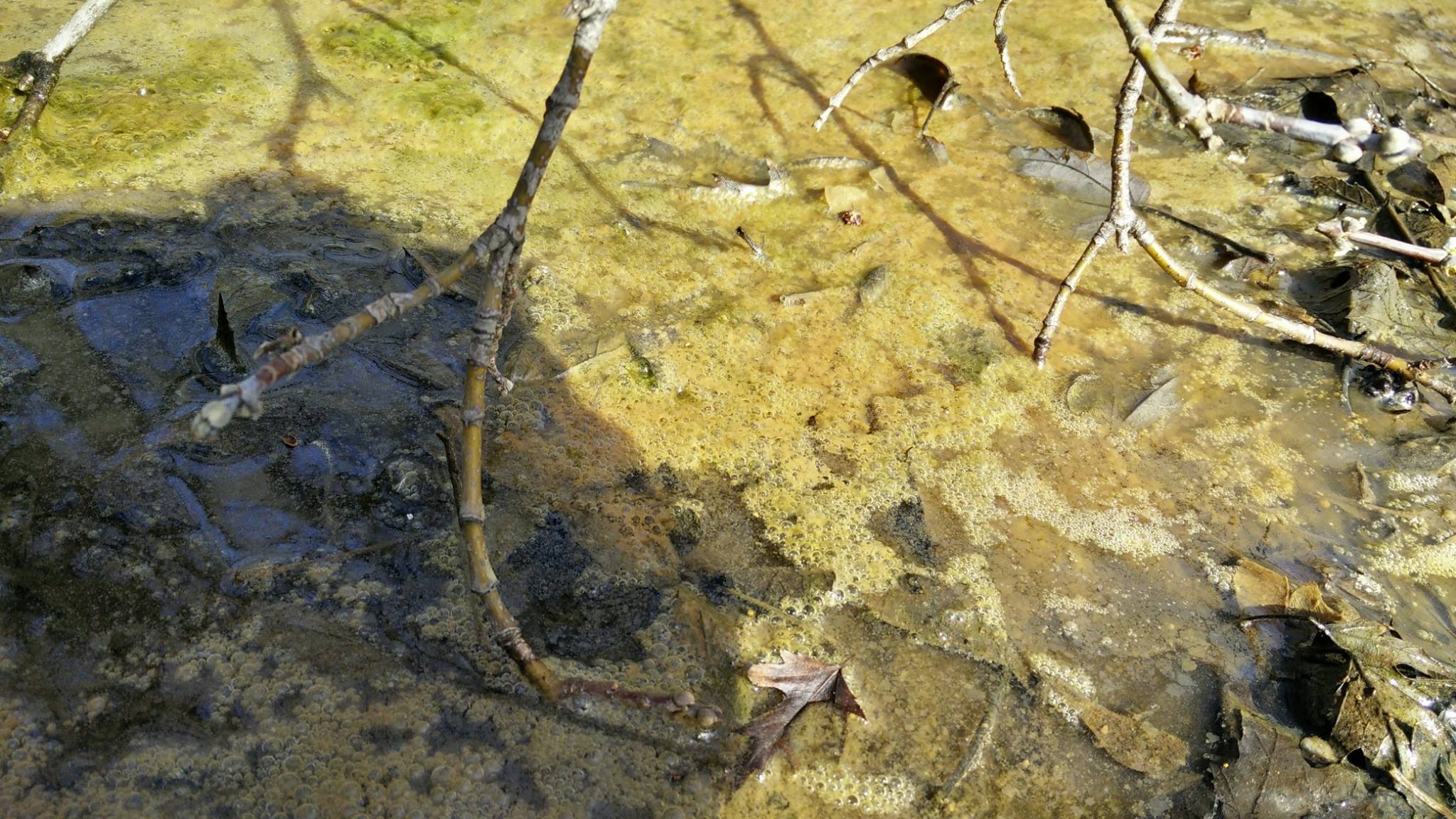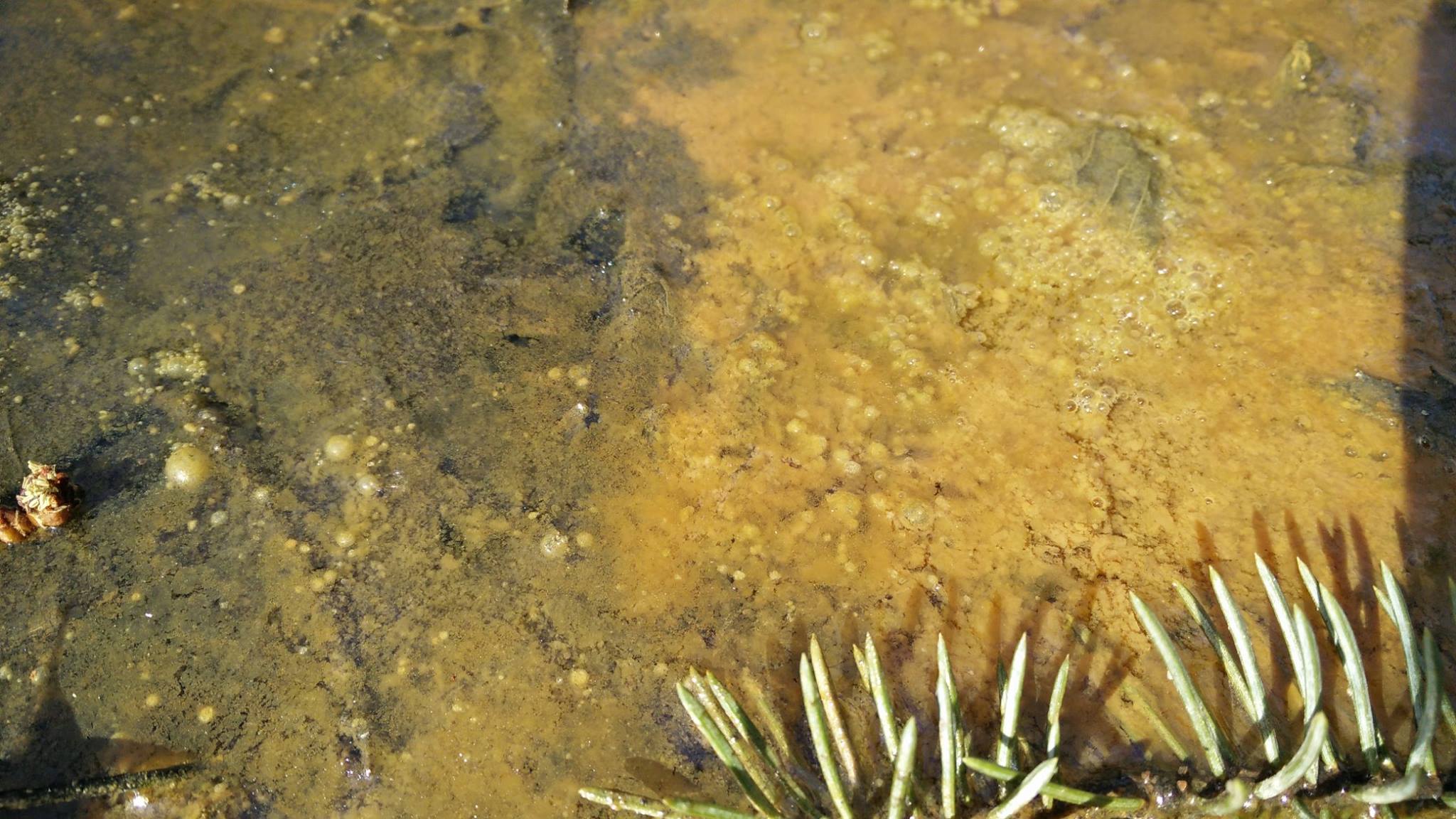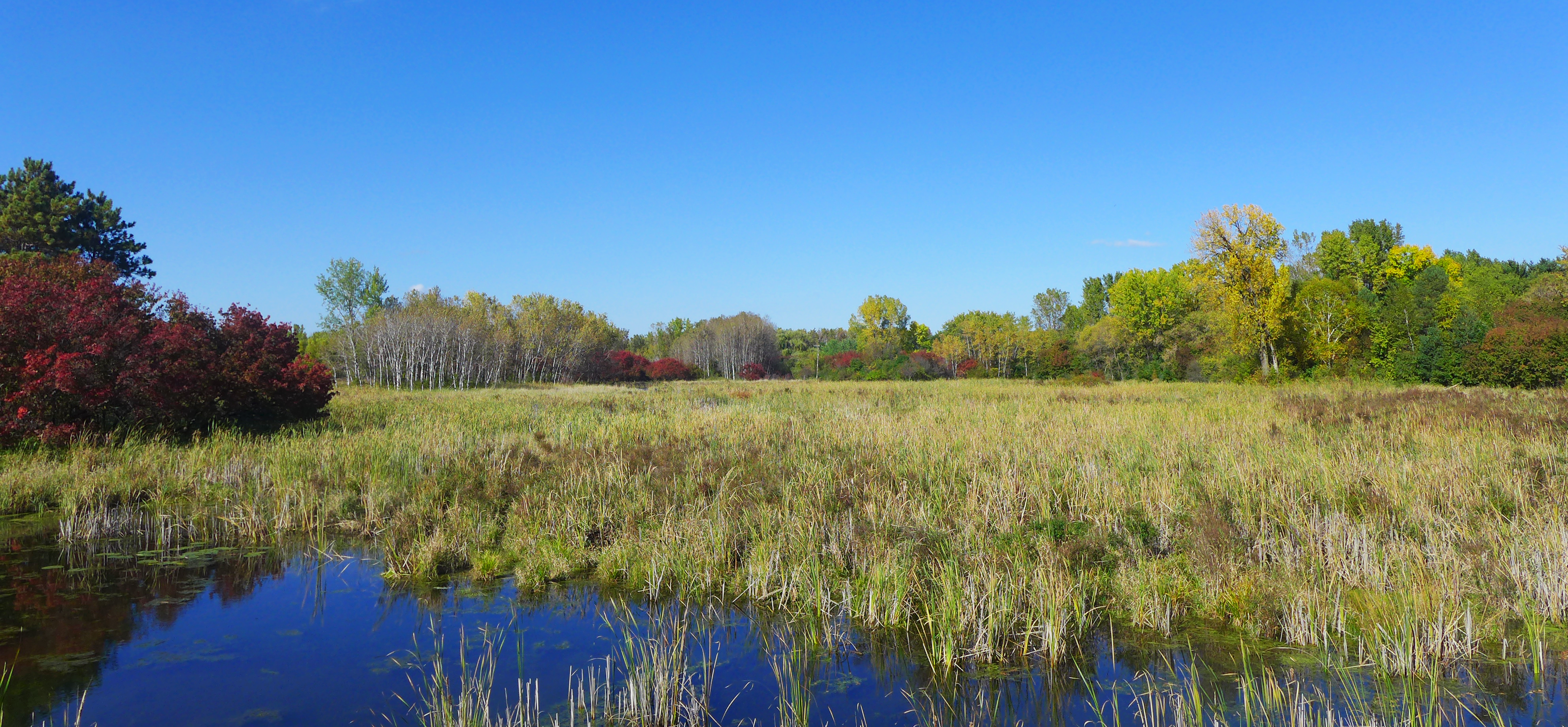Water Science: Wetland Slime
Worry not! There's probably no reason for alarm, as this is a natural occurrence and is evidence of a functioning wetland.
The orange slime is a product of iron-oxidizing microbes, which "feed" on iron molecules that come from the soil. As a result, an orange-colored iron plaque forms on sediment below the water and has the appearance of a toxic, orange "goo". While off-putting, it's actually just a deposit from the bacteria transferring from iron from a solid form (soil) to a solution (water). Without the bacteria, high iron levels would spread into lakes and streams, hindering aquatic life and water quality. This process most often occurs in areas where mineral and iron-rich groundwater seeps into surface water.

This process goes to show the larger role wetlands have in environmental health. Wetlands create a transition zone between aerobic (oxygenated) and anaerobic (non-oxygenated) conditions. Because they're a transition between water, air, and soil, they're a dynamic space balances gas, mineral, and nutrient exchange. Wetland plants (cattails, sedges, and grasses) are a major part of this interaction. With a web of roots that run below the surface (known as rhizome roots) wetland plants provide the structure, or rhizosphere, for these important microbes to grow on.

Microbes and wetland plants work together to keep a wetland healthy, balanced, and productive by bringing oxygen to the water and plants, they consume methane, balance minerals, and balance pH. With oxygen able to reach the plants in these harsh growing conditions, the plants can do what they do - take up nutrients and support insects, birds, and other wildlife. When it all comes together, it's like one big, natural factory that produces habitat, clean air, and clean water!
With higher than average precipitation in the Twin Cities metro and in VLAWMO over the last few years, groundwater tables are also high. With this, we may see more of this orange slime occurring in streams, wetlands, and in low, wet areas.

To learn more about iron-oxidizing microbes check out:
Audio transcript:
Peer-reviewed journal:

